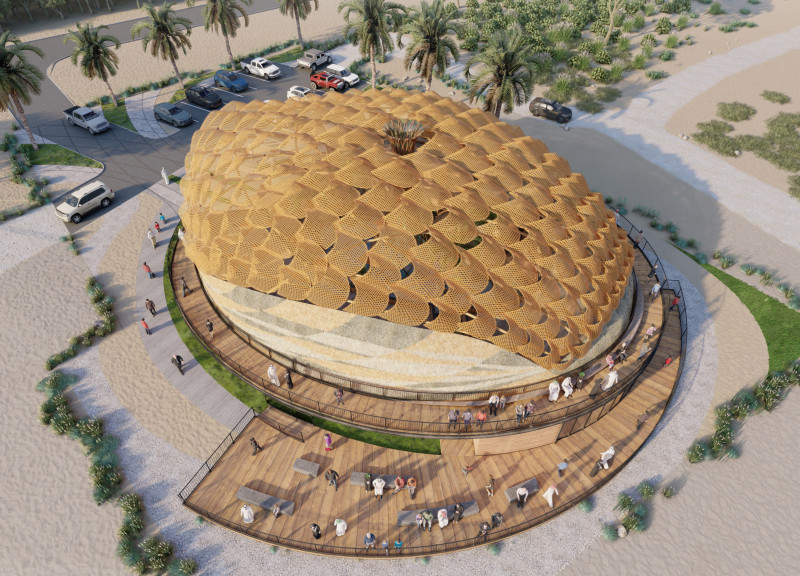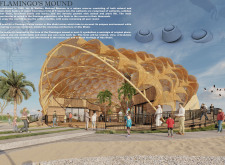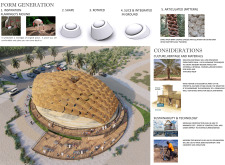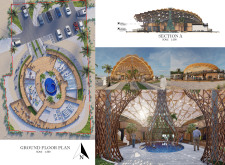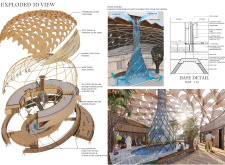5 key facts about this project
At the core of this architectural design is a commitment to creating a vibrant environment that fosters interaction and engagement among its users. The project functions as a community hub, providing various facilities such as meeting rooms, recreational spaces, and areas for cultural activities. These components not only serve practical purposes but also encourage a sense of belonging and collective identity among visitors. The design promotes flexibility, allowing spaces to be adapted for multiple uses, thus enhancing the overall experience.
The unique design approach employed in this project is evident in its meticulous attention to materials and spatial organization. A careful selection of materials has been utilized, including reinforced concrete, glass, steel, and sustainable timber. These materials have been chosen not only for their structural properties but also for their aesthetic qualities, contributing to a cohesive design language. The juxtaposition of solid and transparent elements creates a dialogue between the interior and the surrounding environment, inviting natural light to permeate the space while also framing desirable views of the outdoors.
One of the distinguishing aspects of the architectural design is its emphasis on sustainability. This project incorporates green building strategies that minimize environmental impact, such as rainwater harvesting systems, solar panels, and energy-efficient HVAC systems. The roof has been designed as a green space, featuring vegetation that helps insulate the structure while providing a recreational area for occupants. Such integrations are not just functional; they serve to educate the community about sustainability practices, reinforcing the project's role as a leader in environmentally responsible design.
The architectural layout is carefully orchestrated, with an open floor plan that encourages movement and interaction. Circulation within the building has been designed to be intuitive, guiding users through different zones while maintaining a sense of connection to the overall space. Strategic placement of windows and openings enhances natural ventilation, contributing to a comfortable indoor climate. This attention to the internal environment is complemented by landscaped areas that create a welcoming atmosphere, effectively blurring the boundaries between indoor and outdoor spaces.
Additionally, the incorporation of artwork and local cultural motifs within the design further grounds the project in its geographical context. This enhances the building’s identity, making it a recognizable landmark that resonates with the community's heritage. It encourages local participation, fostering pride and ownership among residents. By celebrating local art and culture, the project not only serves functional needs but also acts as a platform for community expression.
Ultimately, the architecture of this project exemplifies an understanding of the complexities of modern living, where design not only responds to practical needs but also elevates the quality of life for its users. The thoughtful integration of materials, sustainable practices, and community-centric spaces is what distinguishes this architectural endeavor.
For those seeking a deeper understanding of the design and its underlying philosophies, I encourage exploration of the architectural plans, sections, and various design elements that illustrate the project in greater detail. Engaging with these resources will provide invaluable insights into the innovative architectural ideas that shaped this unique project.


